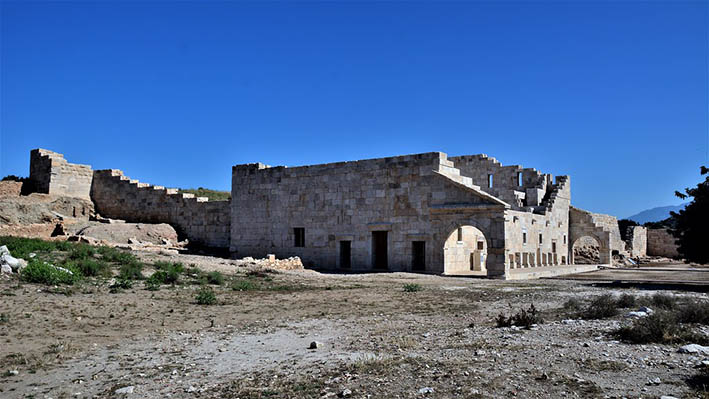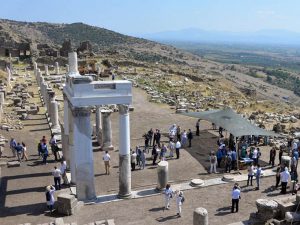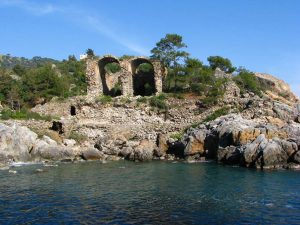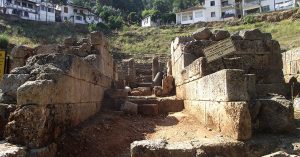Ancient Cities in Turkey
Patara ( Lycia), later renamed Arsinoe (Ἀρσινόη), was a flourishing maritime and commercial city on the south-west coast of Lycia on the Mediterranean coast of Turkey near the modern small town of Gelemiş, in Antalya Province. It is the birthplace of St. Nicholas in 270 AD, who lived most of his life in the nearby town of Myra.
Lycia, ancient maritime district of southwestern Anatolia (now Turkey). Lycia lay along the Mediterranean coast between Caria and Pamphylia, and extended inland to the ridge of the Taurus Mountains. In Egyptian, Hittite, and Ugaritic records of the 14th and 13th centuries BC, the Lycians are described as wedged between the Hittites on the north and the Achaean Greeks on the coast. Known as Luka, they participated in the Sea Peoples’attempt to invade Egypt in the late 13th century. Nothing more is known of the Lycians until the 8th century BC, when they reappear as a thriving maritime people confederated in at least a score of cities that made up theLycian League. Neither Phrygia nor Lydia were able to bring Lycia under its control, but the country eventually fell to Cyrus’ general Harpagus after a heroic resistance. Under Achaemenian Persia and later under the rule of the Romans, Lycia enjoyed relative freedom and was able to preserve its federal institutions until the time of Augustus. It was annexed to Roman Pamphylia in AD 43 and became a separate Roman province after the 4th century. Archaeological discoveries made on sites at Xanthus, Patara, Myra, and other of its cities have revealed a distinctive type of funerary architecture.
Patara; Located between Fethiye and Kalkan, the ancient city of Patara is known as the birth place of the Greek sun god Apollo.




